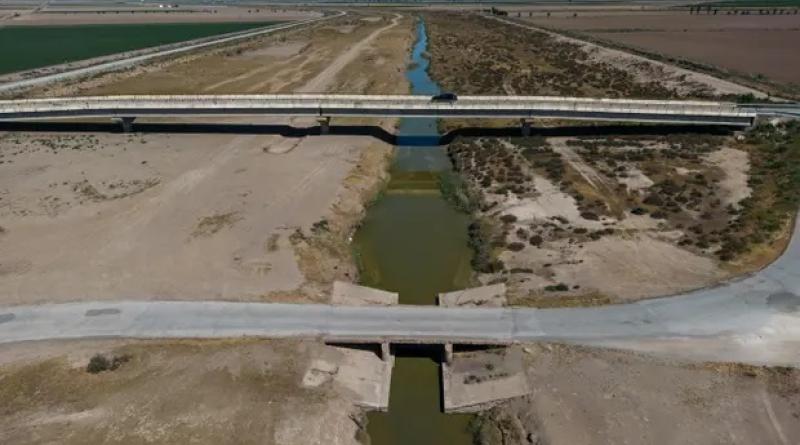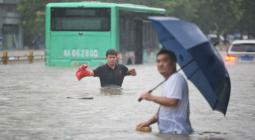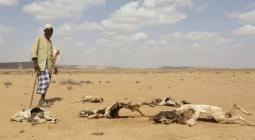Frightening’: record-busting heat and drought hit Europe in 2022

The climate crisis had “frightening” impacts in Europe last year, with heatwaves killing more than 20,000 people and drought withering crops, an EU report has found.
Its writers said drought was already baked in for many farmers in 2023. The only way to limit the rising damages of global heating was rapidly to cut carbon emissions, they said.
The report, from the Copernicus Climate Change Service (C3S), said widespread heatwaves had led to Europe suffering its hottest summer on record in 2022, by a large margin. These would have been virtually impossible without global heating and had led to many premature deaths.
People in southern Europe endured 70-100 days of heat stress, where the temperature felt like at least 32C, accounting for wind and other factors. In the UK, temperatures passed 40C for the first time.
The heat, plus low rainfall, caused drought that affected more than a third of the continent at its peak, the report said, making it the driest year on record. Flows in almost two-thirds of Europe’s rivers were lower than average. High temperatures also meant that the carbon emissions from summer wildfires were the highest in 15 years and the European Alps lost record amounts of ice from glaciers.
Overall, Europe experienced its second-warmest year ever recorded, with temperatures rising at twice the global average rate – faster than on any other continent. Over the past five years, the average temperature has been 2.2C higher than in the pre-industrial era.
One bright spot in the report was that Europe received its highest amount of solar radiation in 40 years, owing to lower cloud cover, enabling above-average levels of solar-power generation.
“The findings are frightening, I have to say, but I think we have to know the truth,” said Mauro Facchini, head of earth observation at the European Commission. “We have more and more extreme events happening in Europe. Every one of us can witness that.”
Carlo Buontempo, director of C3S, said: “We are really moving into an uncharted territory.” The report should be seen as “yet another wake-up call to accelerate our efforts” to cut carbon emissions, which also hit record levels in 2022, he said. Scientists recently predicted that the imminent return of the El Niño climate phenomenon would cause global temperatures to rise “off the chart”.
Dr Rebecca Emerton, the lead author of the C3S report, said: “We cannot stop these climate impacts – we can only limit [them] by reducing greenhouse gas emissions rapidly.”
She said a dry winter and spring in 2023 meant more drought was on the way. “Unfortunately, the impacts are probably already in place for the growing season, so we’re likely to see reduced crop production this year,” she said. Without global heating, droughts such as the record northern hemisphere drought in 2022 would have been expected only once every four centuries.
Prof Daniela Schmidt, at the University of Bristol, UK, said: “We are clearly not prepared for droughts like we have seen in the last year, given the losses in agriculture, scorched plants and fish in dwindling rivers. We need to invest to adapt.”
The C3S report also examined the Arctic and said Greenland had experienced record-breaking ice-sheet melt during exceptional heatwaves in September, when average temperatures were up to 8C higher than average.
A separate report, also published on Thursday, showed that the Greenland and Antarctic ice sheets had lost ice every year since polar satellite records began in 1992, with the seven worst melting years all occurring in the past decade. The melting drives up sea levels and coastal flooding across the planet.
The study, published in the journal Earth System Science Data, found that the polar ice sheets lost 7.6tn tonnes of ice between 1992 and 2020, equivalent to a giant ice cube 12 miles (20km) in height. Scientists predict that if the ice sheets continue to melt at this pace, they will contribute between 15cm and 27cm to global sea level rise by 2100.
Prof Andrew Shepherd, at Northumbria University, UK, said: “We are finally at the stage where we can continuously update our assessments of ice sheet [loss] as there are enough satellites in space monitoring them, which means that people can make use of our findings immediately.”
… as 2023 gathers pace, and you’re joining us from Greece, we have a small favour to ask. A new year means new opportunities, and we're hoping this year gives rise to some much-needed stability and progress. Whatever happens, the Guardian will be there, providing clarity and fearless, independent reporting from around the world, 24/7.
Times are tough, and we know not everyone is in a position to pay for news. But as we’re reader-funded, we rely on the ongoing generosity of those who can afford it. This vital support means millions can continue to read reliable reporting on the events shaping our world. Will you invest in the Guardian this year?
Unlike many others, we have no billionaire owner, meaning we can fearlessly chase the truth and report it with integrity. 2023 will be no different; we will work with trademark determination and passion to bring you journalism that’s always free from commercial or political interference. No one edits our editor or diverts our attention from what’s most important.
With your support, we’ll continue to keep Guardian journalism open and free for everyone to read. When access to information is made equal, greater numbers of people can understand global events and their impact on people and communities. Together, we can demand better from the powerful and fight for democracy.
Whether you give a little or a lot, your funding is vital in powering our reporting for years to come.
cover photo:An irrigation canal in Spain’s Andalusia region lies nearly empty, after extreme heatwaves. Photograph: Zowy Voeten/Getty Images





